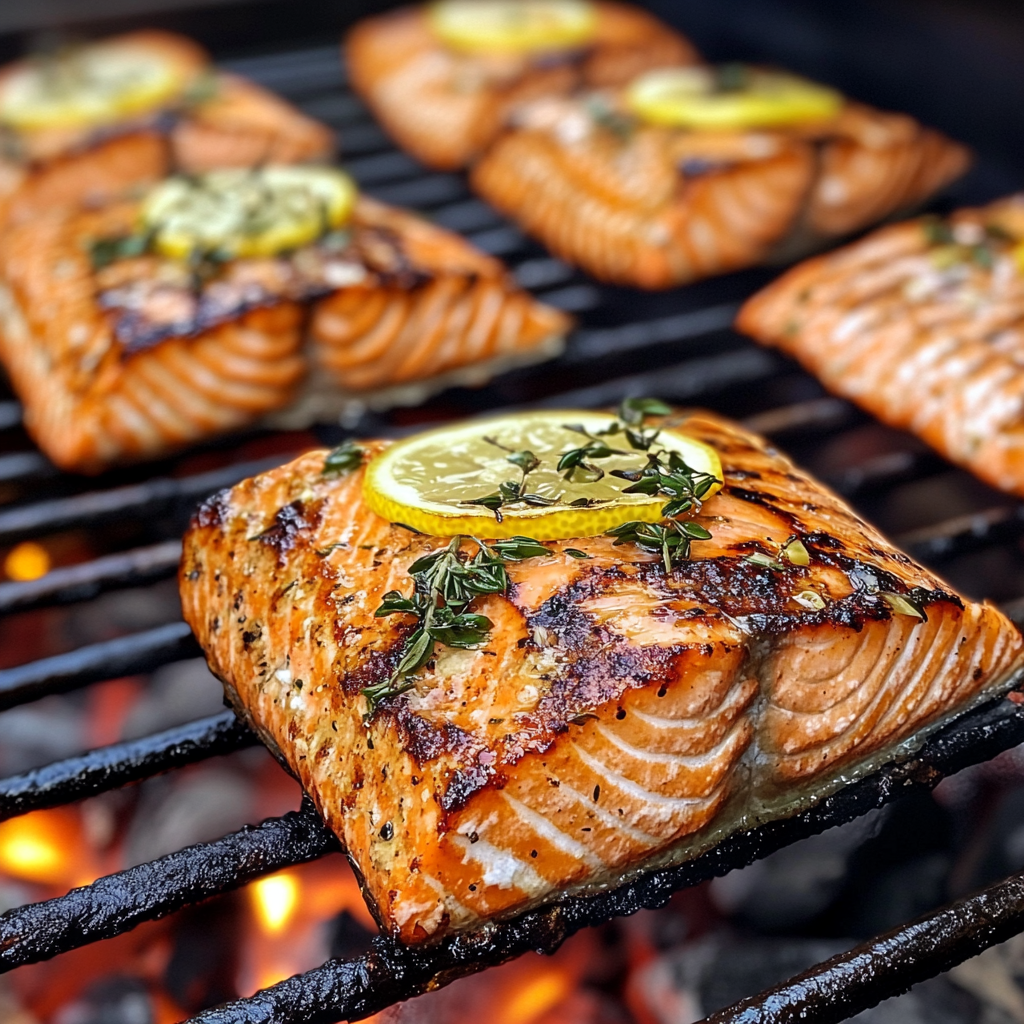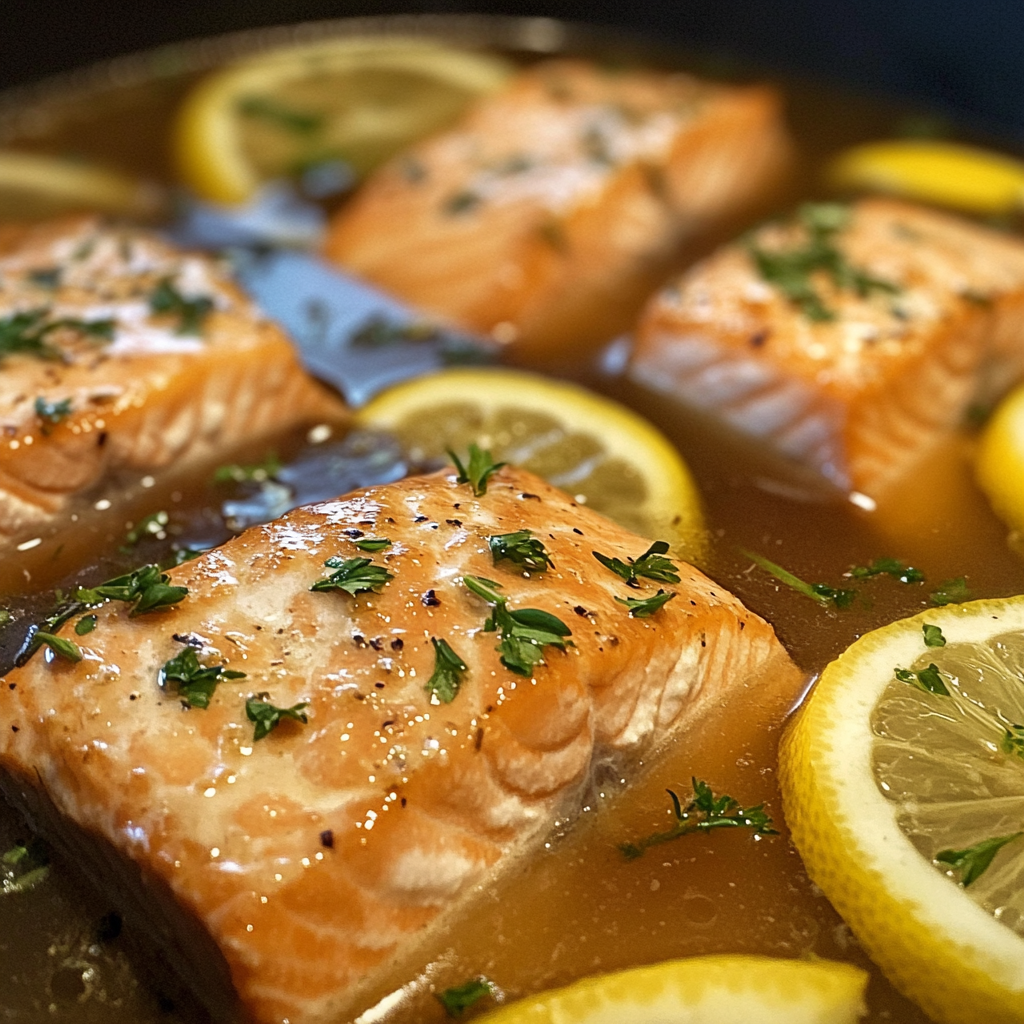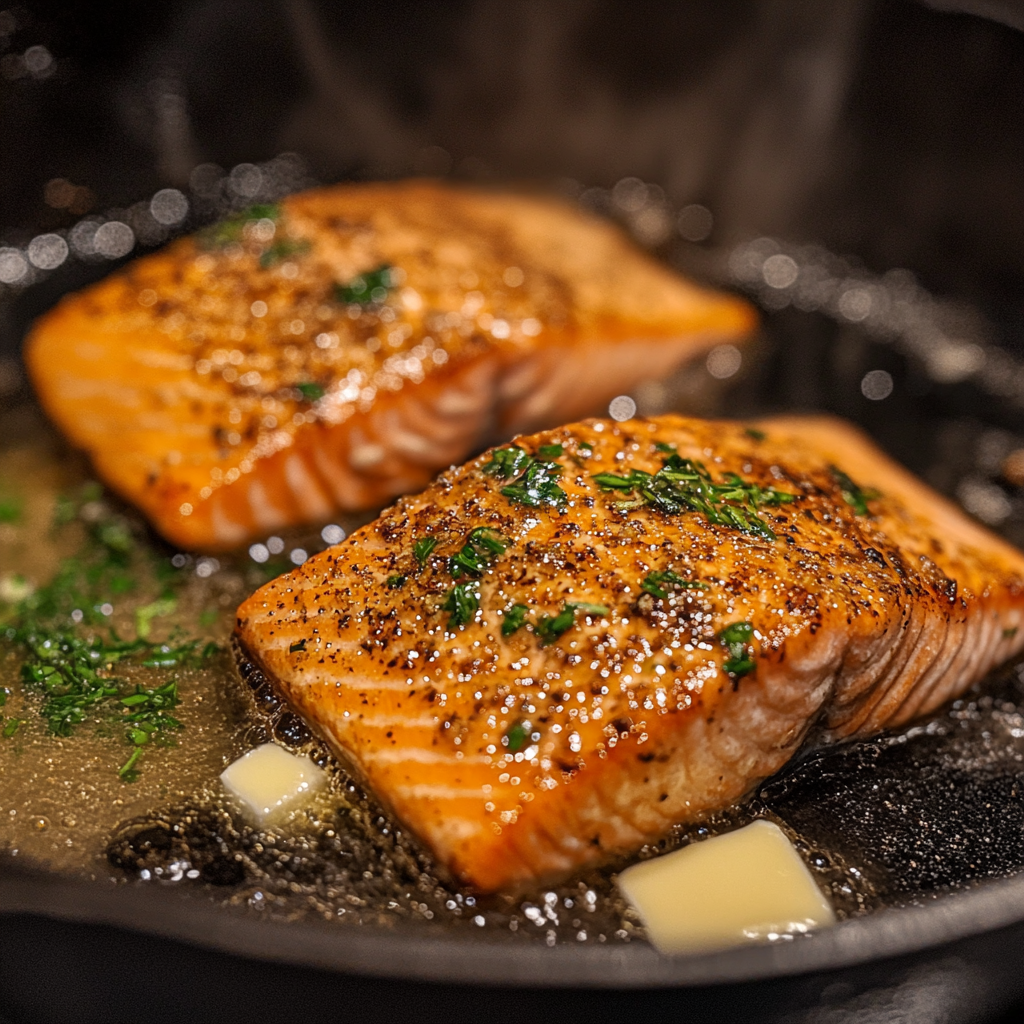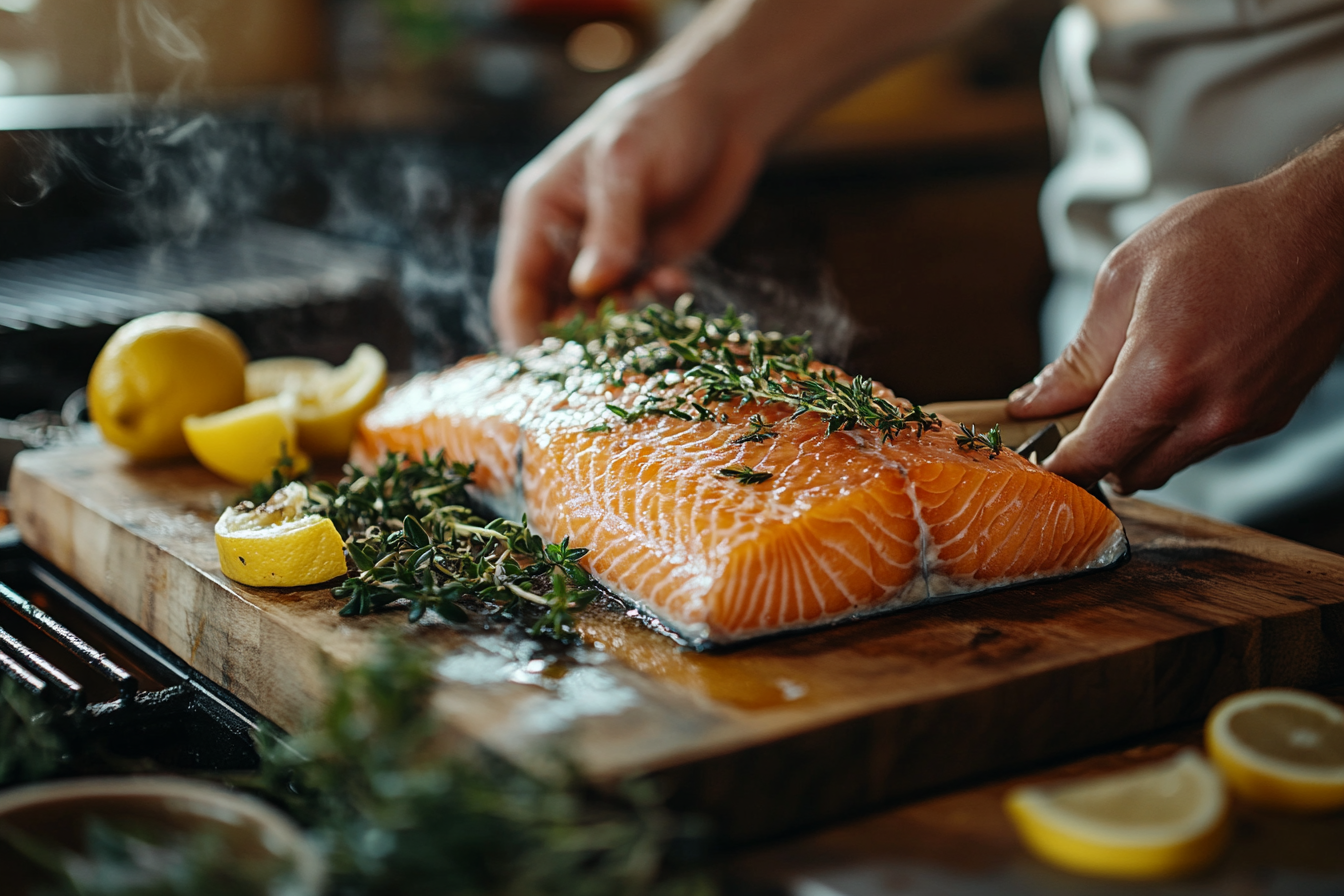King salmon, also known as Chinook salmon, is widely regarded as one of the most delicious and nutritious fish species available. But when it comes to preparing this prized fish, what is the best cooking method for king salmon? Choosing the right method is essential to preserving its rich, buttery texture and bringing out the full depth of its flavor. In this article, we’ll explore the top cooking techniques to ensure you enjoy king salmon at its best.
Why King Salmon Deserves Special Attention
King salmon is often the preferred choice for chefs and seafood enthusiasts due to its rich flavor profile and luxurious texture. Compared to other types of salmon, such as sockeye or coho, king salmon has a higher fat content, which makes it incredibly moist and flavorful when cooked. This natural fat not only enhances its taste but also makes it more forgiving during the cooking process, helping to prevent the fish from drying out.
In addition to its superior flavor, king salmon is packed with omega-3 fatty acids, which are known for their heart-healthy benefits. These healthy fats contribute to the fish’s silky texture and make it a nutritious choice for those looking to add more seafood to their diet. With its robust flavor, king salmon pairs well with a wide range of ingredients, making it a versatile option for various cooking techniques.
Understanding what makes king salmon special is the first step toward selecting the best cooking method for it. Whether you prefer a smoky grilled flavor or a delicate poached dish, king salmon can deliver a restaurant-quality meal with minimal effort.
Grilling for Smoky, Charred Perfection
Grilling is one of the most popular methods for cooking king salmon, particularly during warmer months when outdoor grilling is in full swing. The intense heat from the grill sears the exterior of the fish, locking in moisture and creating a crispy, charred crust. This method brings out the natural oils in the fish, resulting in a smoky flavor that complements the richness of king salmon.
Why Grilling Works for King Salmon
The high fat content of king salmon makes it ideal for grilling because the fish remains moist even when exposed to high heat. Unlike leaner fish that may dry out on the grill, king salmon’s natural oils help it stay juicy and flavorful. Additionally, the grill adds a depth of flavor that can’t be achieved with other cooking methods. The combination of a smoky, charred exterior and a tender, flaky interior makes grilled king salmon a crowd-pleaser.

How to Grill King Salmon
To grill king salmon, begin by preheating your grill to medium-high heat. Oil the grill grates to prevent the fish from sticking, and brush the salmon fillets with olive oil or melted butter. Season the fish with salt, pepper, and fresh herbs like thyme, rosemary, or dill. Keeping the skin on the salmon during grilling is a great idea, as it helps retain moisture and provides a delicious crispiness.
Place the salmon fillets skin-side down on the grill, and cook for 6-8 minutes per side, depending on the thickness of the fillet. For a more flavorful result, you can marinate the salmon in a mixture of lemon juice, garlic, and herbs for about 30 minutes before grilling. The fish is ready when it flakes easily with a fork, but the center should remain moist and slightly translucent.
Serving Suggestions for Grilled King Salmon
Grilled king salmon pairs well with a variety of side dishes. Consider serving it with roasted vegetables like asparagus or Brussels sprouts, or opt for a fresh summer salad to balance the richness of the fish. A light citrus dressing or a dollop of herb butter can elevate the dish even further. For more ideas on how to incorporate grilled salmon into your meals, check out this smoked salmon recipe guide.
Baking for a Tender, Evenly Cooked Salmon
Baking is a simple and reliable method for cooking king salmon, offering even heat distribution that ensures the fish is cooked thoroughly without drying out. This method is particularly great for those who want a no-fuss cooking process that still delivers moist, flavorful results. Baking also allows you to infuse the salmon with various flavors by adding herbs, citrus, and spices.
Why Baking Works for King Salmon
Baking king salmon is one of the easiest ways to prepare the fish while maintaining its natural juices. The slow, steady heat of the oven allows the fish to cook evenly, making it less likely to overcook compared to high-heat methods like grilling or broiling. Additionally, baking allows for greater flexibility in terms of flavoring, as the fish can absorb marinades or spices more thoroughly during the cooking process.
How to Bake King Salmon
To bake king salmon, preheat your oven to 375°F. Line a baking sheet with parchment paper or aluminum foil to prevent sticking and make cleanup easier. Place the salmon fillets skin-side down on the baking sheet, and season with salt, pepper, and olive oil. You can also add slices of lemon, fresh herbs, or a drizzle of honey for added flavor.
Bake the salmon for 12-15 minutes, depending on the thickness of the fillets. The fish is done when it turns opaque and flakes easily with a fork. For an added crispy finish, switch the oven to broil for the last 2-3 minutes of cooking time.
Serving Suggestions for Baked King Salmon
Baked king salmon pairs beautifully with roasted root vegetables, quinoa, or a light cucumber salad. It’s also a fantastic option for meal prep, as baked salmon can be easily reheated without losing its texture. For more tips on keeping your salmon moist while cooking, refer to this guide on how to keep salmon moist when smoking.
Poaching: A Gentle Way to Preserve Moisture
Poaching is one of the gentlest cooking methods for king salmon, resulting in incredibly tender and moist fillets. This method involves simmering the fish in a flavorful liquid, which helps to preserve its delicate texture and enhances its natural flavor. Poached salmon is perfect for those who prefer a lighter, cleaner taste and a soft, melt-in-your-mouth texture.
Why Poaching Works for King Salmon
Poaching is ideal for king salmon because it cooks the fish slowly and evenly without exposing it to direct heat. This helps retain the fish’s natural oils and ensures that the flesh stays moist and tender. Poaching also allows you to control the flavor of the fish by adding aromatics like herbs, citrus, and spices to the poaching liquid.
How to Poach King Salmon
To poach king salmon, you’ll need a large, shallow pan that can hold the fillets in a single layer. Fill the pan with enough liquid to cover the salmon halfway—this can be water, vegetable or chicken broth, or a mixture of water and white wine for added flavor. Add aromatics like garlic, lemon slices, bay leaves, and fresh herbs to infuse the fish with subtle flavors.

Bring the liquid to a gentle simmer over medium heat, then reduce the heat to low. Carefully place the salmon fillets in the pan, ensuring they are submerged in the liquid. Cover the pan and poach the salmon for about 10-12 minutes, or until the flesh is opaque and flakes easily with a fork.
Serving Suggestions for Poached King Salmon
Poached salmon is a versatile dish that can be served hot or cold. It pairs well with a light sauce, such as a lemon-dill yogurt dressing, or served over a bed of mixed greens for a healthy and satisfying meal. For more expert tips on preparing tender salmon, check out this guide on cooking king salmon by Gordon Ramsay.
The Perfect Pan-Seared Crust
Pan-searing is a quick and effective way to cook king salmon, delivering a golden-brown, crispy crust while keeping the inside moist and tender. This method is perfect for those who love the contrast between crispy skin and soft, flaky flesh. It’s also a great choice for busy weeknights when you need to get dinner on the table in a hurry.
Why Pan-Searing Works for King Salmon
Pan-searing king salmon provides a wonderful contrast in textures: the high heat of the skillet creates a crispy skin, while the interior of the fish remains tender and juicy. This method also allows you to lock in the fish’s natural moisture, ensuring that it doesn’t dry out during cooking. Additionally, pan-searing is one of the quickest ways to cook salmon, making it ideal for those short on time.
How to Pan-Sear King Salmon
To pan-sear king salmon, start by heating a non-stick or cast-iron skillet over medium-high heat. Add a tablespoon of olive oil or butter to the pan, and let it heat until shimmering. Pat the salmon fillets dry with a paper towel to remove any excess moisture—this is key to achieving a crispy crust. Season the fish with salt and pepper, and place it in the pan skin-side down.

Cook the salmon for about 4-5 minutes without moving it, allowing the skin to crisp up. Once the skin is golden and crispy, carefully flip the fillet and cook for an additional 2-3 minutes, depending on the thickness of the fillet. If you prefer your salmon medium-rare, aim for an internal temperature of 120°F.
Serving Suggestions for Pan-Seared King Salmon
Pan-seared salmon pairs well with a variety of sauces and side dishes. A simple lemon-butter sauce can elevate the dish, or for a richer option, try serving it with hollandaise or a creamy dill sauce. For more ideas on achieving the perfect texture, explore this guide on cooking salmon without it becoming chewy.
Broiling for Quick, Caramelized Results
Broiling is a fast and effective method for cooking king salmon, using the high heat from the oven’s broiler to caramelize the top of the fish. This method is perfect for those who want a quick cooking process with minimal cleanup. Broiling is similar to grilling but doesn’t require an outdoor setup, making it an excellent option for weeknight dinners.
Why Broiling Works for King Salmon
Broiling king salmon is a great way to achieve a crispy, caramelized exterior while keeping the interior moist and flaky. The intense heat from the broiler quickly cooks the salmon, creating a slightly crispy crust that enhances the fish’s natural sweetness. Because the cooking time is short, broiling is one of the quickest methods for preparing salmon, making it ideal for those who need to get dinner on the table in a hurry.
How to Broil King Salmon
To broil king salmon, start by preheating your oven’s broiler. Line a baking sheet with foil and lightly grease it with oil or cooking spray to prevent sticking. Place the salmon fillets skin-side down on the sheet, and season them with salt, pepper, and your choice of herbs or spices. For added flavor, you can brush the fillets with a glaze made from honey, soy sauce, or maple syrup.
Position the baking sheet about 6 inches from the broiler element, and broil the salmon for 6-8 minutes, depending on the thickness of the fillet. Keep a close eye on the fish, as broiling can quickly overcook it if left unattended. You’ll know the salmon is done when the top is golden and the fish flakes easily with a fork.
Serving Suggestions for Broiled King Salmon
Broiled salmon pairs well with light, refreshing sides such as a citrus salad or grilled vegetables. For a complete meal, serve the fish with a grain salad or roasted potatoes. To experiment with different flavor combinations, check out this king salmon recipe for more inspiration.
Key Tips for Cooking King Salmon
No matter which cooking method you choose, there are a few key tips to ensure that your king salmon turns out perfectly every time:
- Don’t overcook the salmon: King salmon is naturally rich in oils, which help keep it moist during cooking. However, it can still dry out if overcooked. Aim for an internal temperature of 120-125°F for medium-rare salmon, using a meat thermometer to check doneness.
- Let the salmon rest after cooking: After removing the salmon from the heat, allow it to rest for 5 minutes before serving. This helps the juices redistribute throughout the fish, resulting in a more flavorful and moist final dish.
- Season simply for best results: King salmon has a rich, distinctive flavor that doesn’t need heavy seasoning. A simple combination of salt, pepper, lemon, and fresh herbs is often enough to enhance its natural taste without overpowering it.
- Cook salmon with the skin on: Keeping the skin on during cooking helps retain moisture and adds a layer of texture. If you don’t want to eat the skin, it can be easily removed after cooking.
- Pair salmon with complementary sides: King salmon is rich and flavorful, so it pairs best with light, refreshing sides. Consider serving it with roasted vegetables, quinoa, or a citrus salad to balance the richness of the fish.
For more insights into why king salmon is such a special choice, you can explore why king salmon tastes different.
Conclusion
Choosing the best cooking method for king salmon depends on your personal taste and the equipment you have available. Grilling offers a smoky, charred flavor, while baking ensures gentle, even cooking that keeps the fish tender. Poaching delivers a moist, delicate texture, while pan-searing creates a crispy, flavorful crust. Finally, broiling is a fast way to achieve a caramelized finish. No matter which method you choose, king salmon’s rich, buttery flavor will shine through, offering a delicious, nutritious meal that’s sure to impress.

